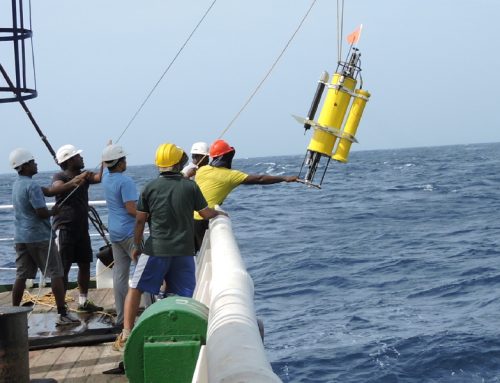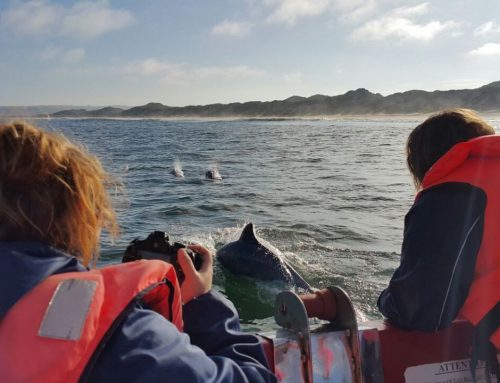 Doctor of chemistry and founder of sustainable development solutions company Tomorrow Matters Now, Dr Jaisheila Rajput, applied her mind to the pressing need for fresh water and fuel in South Africa.
Doctor of chemistry and founder of sustainable development solutions company Tomorrow Matters Now, Dr Jaisheila Rajput, applied her mind to the pressing need for fresh water and fuel in South Africa.
She took one year (February 2016 to February 2017) to research and write about a WWF Nedbank Green Trust-funded project that can unlock freshwater resources and produce value from biomass, notably alien invasive trees that are removed from critical watercourses.
‘We focused on two project areas – Riviersonderend and George in the Western Cape – where there are active alien-vegetation-clearing projects in key water catchments, and where there are also forestry plantations,’ the University of Cape Town PhD graduate explains.
‘We mapped the alien vegetation in the catchments, watercourses and rivers that threaten water security for two reasons: the alien vegetation absorbs vast amounts of water and there is the risk of trees falling into the river ways and obstructing the flow.’
In Riviersonderend the key alien invasive species are acacia, pine and eucalyptus, and in George they are acacia, pine, hakea and wattle.
‘We then looked at what had been done before in the alien clearing/water space in the region, what worked and what didn’t. We also mapped the location of forestry plantations in these areas to identify supplementary or alternative biomass reserves, in order to ensure there is continuous, year-round supply.’
During the Western Cape’s winter rainfall season, for example, there is no alien vegetation clearing in many parts. It therefore needs to be supplemented with forestry biomass that, for economic reasons, is available within a 50 km radius of the town or industry where it is required.
During the project, Rajput and her team collaborated with representatives from the Department of Environmental Affairs’ National Resource Management Project, the Council for Scientific and Industrial Research, WWF and WWF corporate partners such as SABMiller, which has an extensive presence in the hops-growing Outeniqua Mountains area around George, and is active in alien-vegetation-clearing projects in the key water catchments here.
The project team had discussions with the Riviersonderend and George communities and municipalities to identify suitable applications and markets for the biomass, including domestic heating, energy-efficient clay brick manufacturing, eco-furniture manufacturing, light industry and boilers, such as those used by SABMiller. Without making technical changes to its traditionally coal-fired boilers, SABMiller found it could use 10% to 15% biomass with a carbon gain.
‘From here we determined how to holistically optimise the combination of freshwater, forestry and alien vegetation biomass for regional communities and industry at different scales and for specific needs,’ continues Rajput. ‘Examples of regional needs are thermal energy (heat or steam) for the hops fermentation process and wood preparation for the furniture industry.’
The viability determination process included calculating the economics of alien vegetation clearing from water sources, the distance to market, the value of the alien and forestry biomass itself and how it could efficiently, more cost-effectively and with a lower carbon footprint replace existing fuel sources such as coal.
The high transportation costs need to be part of the equation, as does the complexity of removing aliens from inaccessible mountain areas. Beyond a 40-degree slope, specialised equipment is required for clearing and harvesting biomass, and this comes with additional costs.
‘It is a misnomer that alien vegetation is available free of charge,’ says Rajput. ‘The clearing is subsidised by Working for Water and private landowners, but this is only part of the cost of harvesting and delivering it.
‘At the same time it has many advantages, including the fact that alien vegetation biomass is considered to be carbon neutral, which is increasingly important for industries that need to offset their carbon footprint, such as SABMiller and Mondi.’
Another significant advantage is the establishment of decentralised, sustainable jobs through the creation of new, local biomass industries and businesses. For example, towns and areas where there is an abundance of alien and forestry-derived biomass could leverage off the Department of Environmental Affairs’ Lighthouse Project where wood chips and wood fibre are used to create a composite, which is then mixed with concrete to make prefabricated walls for low-cost housing. This lends itself to the establishment of a fleet of startup businesses. Other businesses include the processing of alien biomass into logs or wood chips that can be used as fuel in wood gasification units that they could market with the fuel. These units can be used to heat up schools or to produce biochar, which is used by farmers to enrich the soil.
The George-based campus of Nelson Mandela Metropolitan University has also developed a solar-powered kiln, which is used in greenhouse-type structures to dry wood. What this means is that alien biomass for furniture and other needs can be dried and stored for use during the non-clearing winter season. This is an important breakthrough, as most of the invasive alien trees have 40% water retention.
‘Over the past year what we have done is demonstrate the feasiblity of a viable biomass beneficiation approach that is value-chain based and gets everyone on board – from the clearers to the technology developers to the startups and corporates,’ says Rajput. ‘It’s the first step, but what is exciting is that there is definitely opportunity to viably, sustainably and exponnetially develop this entire industry.’
For more information on Tomorrow Matters Now |TOMA-Now visit: www.toma-now.com.
A video on developing the biomass value chain can be seen at: https://youtu.be/Ew_9CJoqWOw




